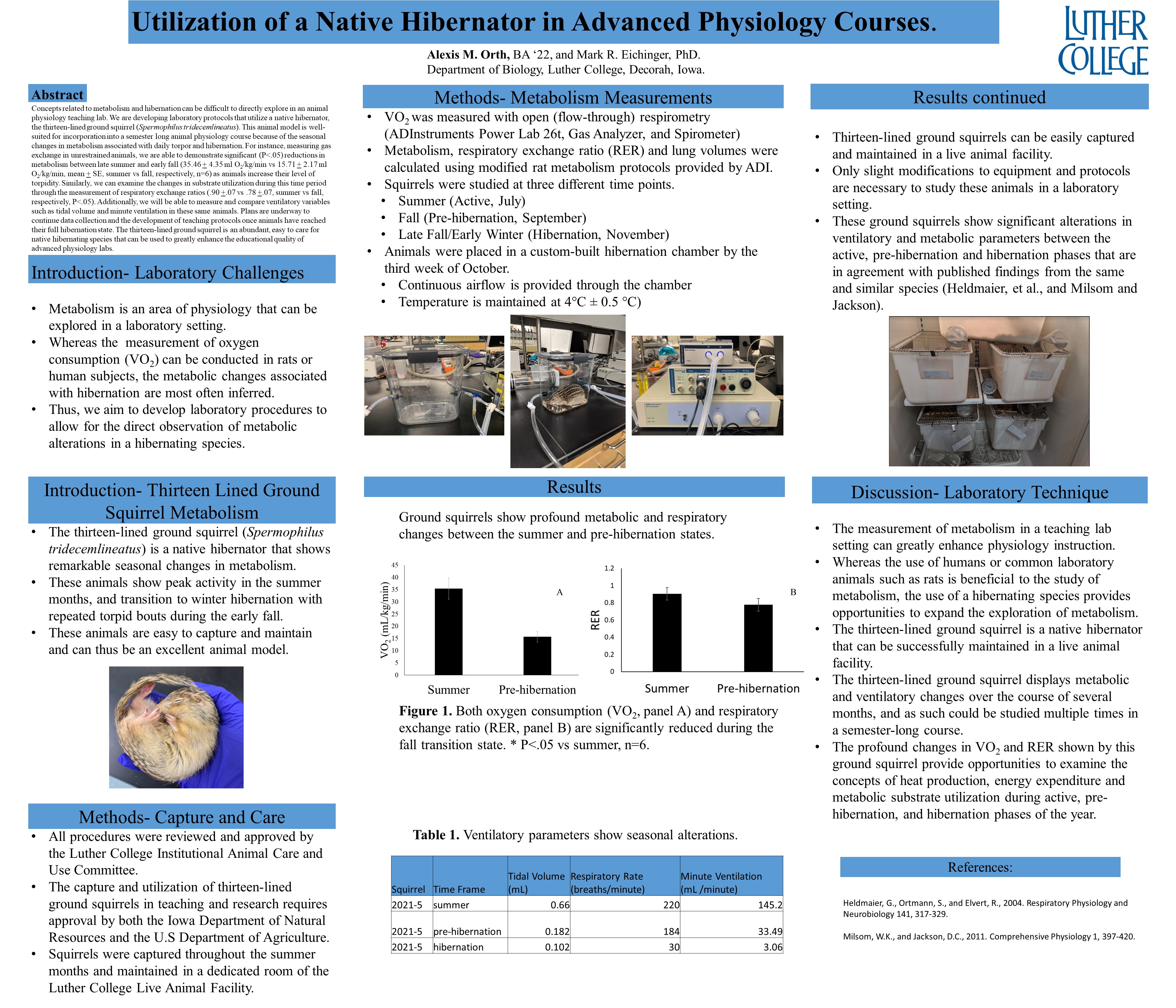
POSTER ABSTRACTS
Materials should NOT be shared with those that are not registered for the conference. Poster abstracts are not proofed for spelling and/or grammar errors.
The poster and/or other information contained on this website may NOT be downloaded and/or used without prior written permission from all authors on the project. If you would like to be connected with the author(s), please email [email protected].
Utilization of a native hibernator in advanced physiology courses
Alexis M. Orth, BA'22 and Mark R. Eichinger, PhD
Department of Biology, Luther College, Decorah, IA
Abstract
Concepts related to metabolism and hibernation can be difficult to directly explore in an animal physiology teaching lab. We are developing laboratory protocols that utilize a native hibernator, the thirteen-lined ground squirrel (Spermophilus tridecemlineatus). This animal model is well-suited for incorporation into a semester long animal physiology course because of the seasonal changes in metabolism associated with daily torpor and hibernation. For instance, measuring gas exchange in unrestrained animals, we are able to demonstrate significant (P<.05) reductions in metabolism between late summer and early fall (35.46 ± 4.35 ml O2/kg/min vs 15.71 ± 2.17 ml O2/kg/min, mean ± SE, summer vs fall, respectively, n=6) as animals increase their level of torpidity. Similarly, we can examine the changes in substrate utilization during this time period through the measurement of respiratory exchange ratios (.90 ±.07 vs .78 ± .07, summer vs fall, respectively, P<.05). Additionally, we will be able to measure and compare ventilatory variables such as tidal volume and minute ventilation in these same animals. Plans are underway to continue data collection and the development of teaching protocols once animals have reached their full hibernation state. The thirteen-lined ground squirrel is an abundant, easy to care for native hibernating species that can be used to greatly enhance the educational quality of advanced physiology labs.
Access PDF version to expand view.

